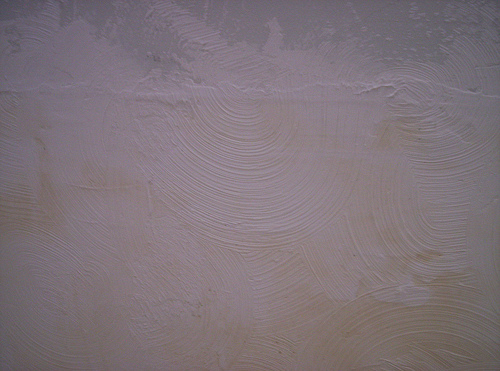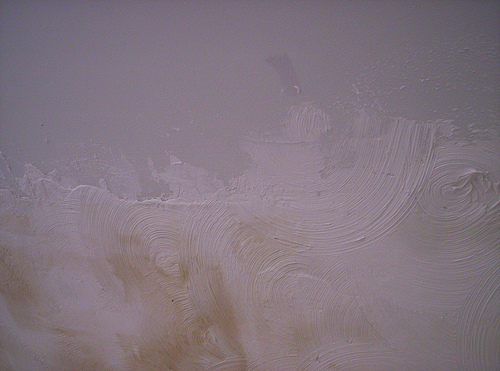[post_name drywall contractors It's Time to Fix That Hole in the Wall

Repairing split drywall seams can be annoying at best. If there is just a really, really little split existing, you could be able to damage out the fracture to a wider dimension and then just apply new spackling compound. Utilizing a sharp, sharp tool such as an old fashioned could opener (church secret), scrape placed a groove larger and also somewhat longer than the crack. It should go to least 1/8" deep but deeper is much better. There are patching compounds offered today made simply for covering fractures yet are not meant for huge locations. If this is a painted wall surface some amount sanding will additionally be called for. Spackle will not adhere to a smooth paintinged coating. Sand the area around the split at the very least a couple of inches bigger than the crack and after that proceed as well as apply the patching compound ensuring you require the spackle down right into the crack. Right after applying the spackle, re-wipe the location with your knife to eliminate any excess spackle from the location leaving a level surface. Depending upon exactly what kind of substance you bought the drying out times vary a fair bit from minutes to hours. After the spackle is totally dry usage a 100 or 120 grit drywall fining sand paper to smooth area so it is flush with the existing wall. Prime the drywall as well as mount the final paint.In a situation
where the splits are a lot bigger along the joints, it could brought on by the drywall tape drawing loose, physical damages or perhaps even excess moisture. Meticulously get rid of any type of and all loose materials at taped locations. You could not and also I repeat, could not re-spackle old tape. The drywall tape has minute holes that enables the spackle to pass through as well as secure the tape to your seams. The spackle "damps" the tape assisting it not just to stick to the drywall however allows the spackle to create a bond on both sides to the drywall. Once it is used, the holes are filled consequently making the tape pointless. Attempting to route will only trigger the joint to re-crack later.After removing all loose materials, gently sand the harmed areas taking care not to tear or sand through the paper layer of the drywall underneath. As soon as the area is smooth to the touch make certain you have sanded evenly onto the surrounding location so as not to leave an edge that will certainly reveal with the ended up work. Utilizing a six inch large spackle knife, set up an even coat of brand-new spackle over the joint. Put your new drywall tape over the seam and also utilizing the knife, push the tape strongly into the drywall getting rid of all excess spackle as it ejects from under the tape and also sides of the knife. Do not get rid of as well much spackle so about leave the paper dry. When the location is as smooth as you could make it, use a second lighter layer over the same area ensuring the brand-new tape is completely embedded in fresh spackle.After drying out for eventually to assure all the spackle is dry, re-sand the
whole area to again acquire a smooth feeling to the entire repaired location. Using your twelve inch blade, spread a second coat to the entire repair work making certain you blend efficiently into the adjacent wall surface surfaces. Do not leave any kind of ridges or sharp edges where you fulfill the old wall surface finish.Once this second layer of spackle is completely dry, which will certainly be a lot less compared to the skim coat as it is much thinner, use, utilizing your twelve inch knife, a third really slim coat of fresh spackle. You will practically be able to translucent this layer as it is utilized to load little indents or scratches left by fining sand the 2nd coat. Again after the 3rd coat dries, extremely gently sand the repair work for the last time to assure a totally smooth finished area. Use a layer of drywall guide to seal the recently repaired drywall location and afterwards repaint your wall.If the drywall seams have actually totally broken or split open there might be an architectural problem that should be re-mediated prior to you take care of the drywall joints. Building settlement, structure issues or other items may impact the drywall finishes so be sure they are fixed first.Once you are certain there are nothing else problems present, as in a minor repair work, remove all loosened or broken materials. If the drywall itself is fractured, reduced the drywall back to a stud and also install a new item of drywall. The repair work is the very same as a minor crack just on a much bigger scale.Installing tiny pieces of drywall for patching develops exactly what are called butt joints which are much harder to conceal. You will be required to spread your spackle over a much larger location to
obtain a smooth look and not a bump in the wall surface. With method you could do this work as well as save on your own a fantastic bargain of money.If you remain in a rush and also the repair work is reasonably little, there fast drying out materials available such as Durobond 90 which when added to spackle makes the spackle rock hard in ninety minutes. There is likewise a forty-five min type available but only genuine pros must attempt and also use it. Forty-five mins zips actually rapid. When I state it dries out rock hard, it is practically difficult to sand when dried so any type of little issues left in the surface area with your blade will reveal later on. Be careful.Remember to keep your tools tidy, do not tear open cans or covers with your blades as it will damage or chip the edges of the knives and work as clean as you can to stay clear of tedious cleanup later on.
Drywall Repair Questions Answered by a Professional
Sheetrock is a type of drywall and is made as well as a trademarked item by US Plaster Company, one of the leading providers of drywall on the planet. It is additionally referred to as gypsum wallboard. Sheetrock is a mix of natural plaster, water, and sand that is pushed between 2 heavy sheets of paper. It is a building product that is made use of globally to build architectural aspects like ceilings as well as wall surfaces. It was developeded in 1916 yet it took an additional thirty to forty years before it caught on with home builders, who had actually commonly created wall surfaces from plaster.Benefits of sheetwork vs plaster & bull; It is faster to set up sheetrock compared to it is to
• install plaster & bull; Sheetrock can be repainted or topped right away after• it has been installed so the structure of the home or office could be proceeded with no delay. With plaster it needs days and even weeks to entirely dry & bull; Plaster evaluates greater than sheetrock so there is less wear and tear on the
• structure's structure and also structural systems & bull; There is a higher degree of fire-resistance with sheetrock than there is with platter. This can give the ones in the building more time to leave the structure safely in an emergency situation like a fire.Size of sheetrock The common sheet of sheetrock procedures four feet by eight feet however for structures with specialized requirements
or have high ceilings the contractor could get bigger sections. Typically, the indoor wall surfaces of a structure are created from drywall that is one-half inch thick. If the structure's wall surfaces are mosting likely to be subjected to even more wear and also tear, the contractor can find thicker sheets of five-eights thick. If there is a rounded wall surface, a home builder can use sheetrock that is one-fourth inch thick. The sheets of sheetrock can be formed due to the fact that they are moderately flexible.Types of sheetrock There are several different types of sheetrock that could be used for various applications. & bull; Traditional-it is normally fire-resistant but the builder could select Type-X,
which is fire-rated sheetrock. This sheetrock is boosted with vermiculite as well as perlite to boost its resistance to flames and also warm.
• Builders make use of Type-X drywall in business buildings, which has fire-rated ratings from twenty to one hundred eighty minutes. & bull; Greenboard-this gets its name from its eco-friendly paper coating, which is a material that is moisture-proof as well as is used in washrooms as well as cooking areas. & bull; Blueboard-this is the kind that a contractor would pick if the owners desire the wall surfaces to have the look of plaster. & bull; Soundboard-this type of sheetrock is built to block the transmission of sound in between various rooms.
• It could be mounted in several layers making certain that the levels of sound could be kept.

How to Patch Holes in Dry Wall
Drywall repair Winter Garden - sheetrock repair
